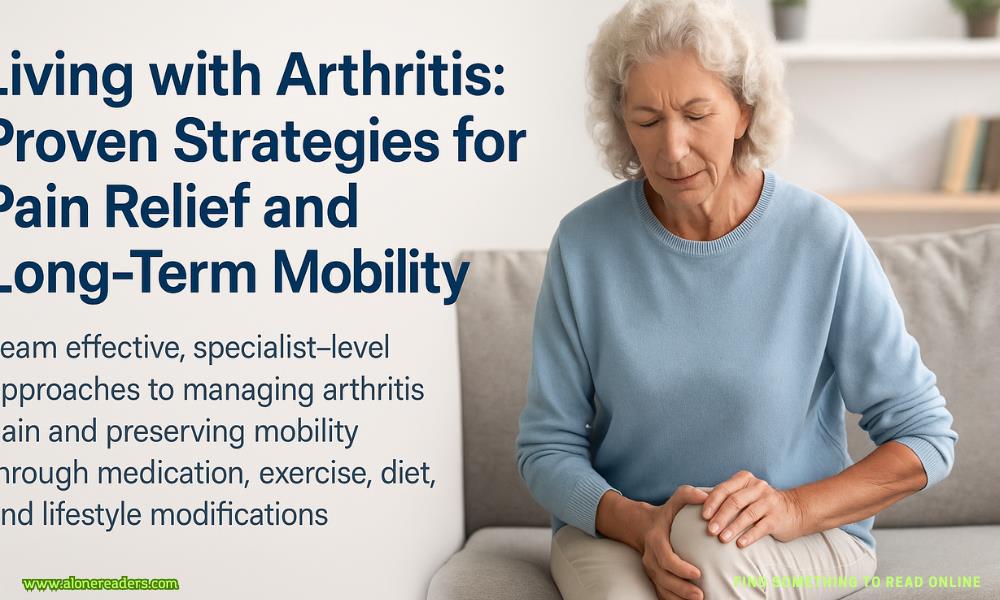
Arthritis isn’t a single disease—it’s a complex umbrella term encompassing over 100 different types of joint disorders, the most common being osteoarthritis and rheumatoid arthritis. Living with arthritis is not just about enduring pain—it’s about managing inflammation, preserving mobility, and preventing long-term disability. Unlike generalized wellness advice, this article dives into targeted, expert-level strategies to help arthritis patients regain control of their lives.
Arthritis treatment starts with a correct diagnosis, as management differs dramatically between types.
Osteoarthritis (OA)
This degenerative condition results from the gradual wear and tear of cartilage, usually affecting knees, hips, spine, and hands. It typically progresses with age and is often asymmetrical.
Rheumatoid Arthritis (RA)
An autoimmune disorder that causes systemic inflammation, RA can lead to permanent joint damage if untreated. It affects joints symmetrically and may also involve organs.
Psoriatic Arthritis, Gout, and Lupus-Related Arthritis
Other forms like psoriatic arthritis involve skin inflammation; gout arises from uric acid crystal buildup; lupus arthritis stems from systemic autoimmune activity.
Why It Matters
A person with RA should not follow the same regimen as someone with OA. RA may require immunosuppressants, while OA benefits more from physical therapy and localized interventions.
Pain in arthritis is not just a mechanical issue—it involves inflammation, nerve sensitivity, and psychological components.
NSAIDs and COX-2 Inhibitors
Drugs like ibuprofen and celecoxib are effective but carry risks such as gastrointestinal bleeding or cardiovascular issues, especially with long-term use.
Topical Agents
Capsaicin cream and diclofenac gel can offer localized relief, particularly for OA of the hands and knees, without systemic side effects.
Corticosteroid Injections
For acute flares, intra-articular corticosteroid injections (like triamcinolone) provide targeted relief. However, they should be limited to 3-4 times per year per joint due to the risk of joint damage.
Neuromodulators
In chronic cases, drugs like duloxetine (an SNRI) have shown efficacy in reducing pain perception, especially where conventional analgesics fail.
Complementary Therapies
Acupuncture, transcutaneous electrical nerve stimulation (TENS), and cognitive behavioral therapy (CBT) can be used to address chronic pain holistically.
Arthritis thrives on immobility. Maintaining and improving joint movement is critical—not optional.
Targeted Physical Therapy
A licensed physiotherapist can tailor joint-specific programs. For example:
Aquatic Therapy
Exercising in warm water reduces joint stress and allows greater range of motion, making it ideal for advanced arthritis or post-surgical recovery.
Assistive Devices
Canes, walkers, shoe inserts, and compression gloves reduce joint stress and improve function. Patients often wait too long before adopting these tools, which can delay mobility improvements.
Movement Schedules
Break sedentary periods every 30 minutes with joint-specific stretches or low-impact movement (e.g., walking, mini squats, wrist rolls). Prolonged inactivity worsens stiffness and pain.
Diet alone won’t cure arthritis, but it can substantially influence inflammation and pain thresholds.
Anti-Inflammatory Diet
Key foods include:
Foods to Avoid
Supplements
Every pound of excess body weight puts nearly four pounds of extra pressure on the knees. Obesity accelerates OA progression and increases RA severity through adipokine-mediated inflammation.
Realistic Weight Goals
Even a 5-10% reduction in body weight can significantly reduce joint stress and pain levels.
Exercise Caution
Obese patients should avoid high-impact activities and focus on:
Behavioral Weight Loss Programs
Structured programs combining nutrition, activity, and psychological support are more effective than self-directed efforts.
Insomnia and Pain Loop
Poor sleep increases pain sensitivity. Conversely, pain disturbs sleep—a vicious cycle. Patients must prioritize sleep hygiene: consistent schedules, no screens before bed, and quiet, dark environments.
Anxiety and Depression
High rates of anxiety and depression in arthritis patients worsen subjective pain scores. Treatment with CBT or SSRIs like sertraline has shown improvement in both mood and pain management.
Mind-Body Techniques
Yoga, guided meditation, and diaphragmatic breathing have small but meaningful effects on overall wellness and coping capacity.
Ergonomic Adjustments
Activity Modification
Splints and Braces
Wrist splints in RA or knee braces in OA can offload pressure during flare-ups. However, avoid prolonged use without physical therapy to prevent muscle atrophy.
DMARDs and Biologics (For RA)
Drugs like methotrexate, leflunomide, or newer biologics (etanercept, adalimumab) can halt disease progression but require close lab monitoring for liver, kidney, and immune parameters.
Monitoring Parameters
Patients should adhere to scheduled:
Vaccinations
Immunosuppressed patients (e.g., those on biologics) should stay current with flu, pneumonia, shingles, and COVID-19 vaccines.
Joint Replacement
Hip or knee replacement is indicated when pain severely limits function and other therapies fail. Outcomes are excellent, but recovery requires committed rehab.
Arthroscopic Debridement
For mechanical symptoms like catching or locking in early OA, minor procedures may delay the need for replacement.
Synovectomy (RA)
Surgical removal of inflamed synovial tissue may benefit RA patients with persistent synovitis despite aggressive treatment.
Conclusion: Living Well Despite Arthritis
Managing arthritis is not about waiting for a cure—it’s about implementing targeted, evidence-based strategies that reduce pain and protect mobility. From pharmacological treatment to lifestyle overhaul, the path to improved function requires a personalized, proactive approach. With early intervention, ongoing education, and multidisciplinary support, arthritis patients can continue to lead fulfilling, mobile lives—even in the face of chronic joint disease.